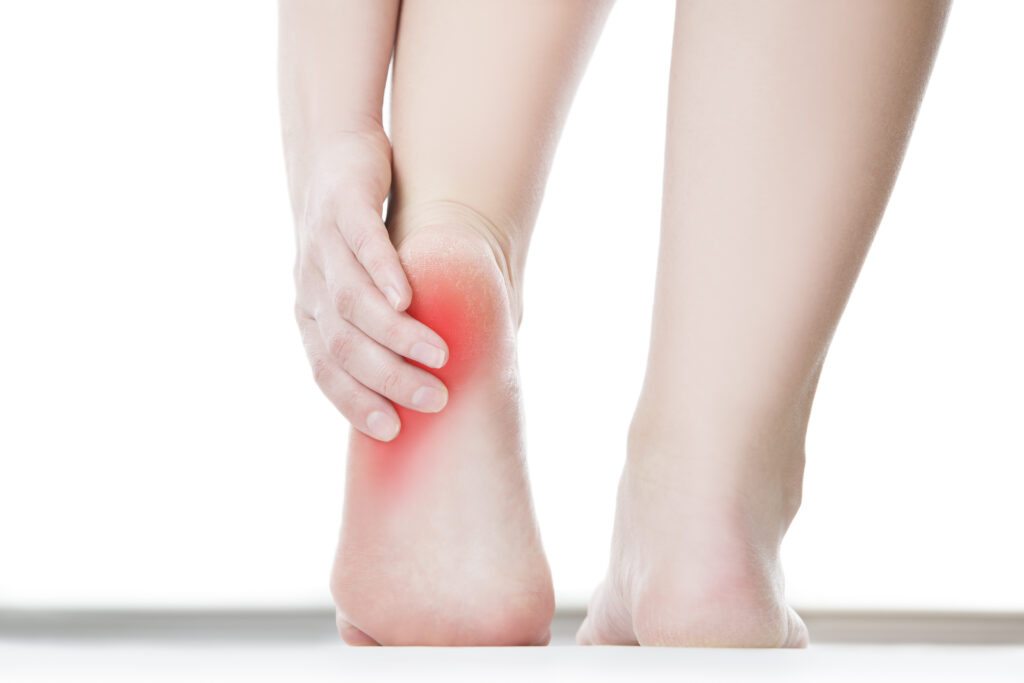Article
Does your lower extremity hurt?

Plantar foot pain, commonly referred to as plantar fasciitis, is a very common condition experienced in both the athletic and general population. The muscles, tendons, and ligaments of the arch and underside of the foot are placed under enormous amounts of stress with walking and weight bearing activities. Although the foot is naturally designed to accommodate these stresses, there are many factors, that place an individual at increased risk for plantar foot pain. These include improper footwear, faulty foot mechanics, poor flexibility, weakness, and obesity.
Typically, plantar foot pain will begin gradually with activities and be relieved with rest. Over time, as the soft tissues become tighter and more irritable, the pain will become more intense and occur more frequently. It is likely due to this gradual onset and escalation of symptoms, that there is a common misconception that the pain will just get better on its own. Without proper early identification and treatment, the pain can become very debilitating, making ordinary tasks like getting out of bed and walking, feel very difficult.
The muscles of the underside of the foot are small, but very strong. They are designed to withstand large loads placed on them as they support the arch of our foot. However, once they start becoming irritated from abnormal stresses placed upon them, they will tighten and become less flexible. This places them at even greater risk for continued damage and weakening. It is the classic example of a vicious cycle.
The first line of defense prescribed is often ice, rest, and gentle stretching of the plantar fascia and calf. Early treatment for your foot pain increases the likelihood that you will make a quick recovery. If your symptoms last longer than 2 weeks, it is a good idea to have your foot evaluated.
A thorough evaluation from an orthopedic physical therapist is instrumental in determining your specific gait mechanics, foot posture, areas of reduced flexibility, muscular weakness, and other factors that are causing you to have plantar fasciitis.
You will be instructed on proper exercises and stretches that will be most helpful for your foot posture, activities and symptoms. Hands-on treatment from your physical therapist is necessary to reduce adhesions in the plantar fascia and foot muscles, lengthen the tight muscles, and restore normal mobility to the arch. Advice on orthotics, proper footwear and night splints is routinely offered.
One hands-on approach that is available for plantar foot pain is Active Release Techniques (ART), a specific form of soft tissue treatment that addresses the underlying adhesions and scar tissue that impairs arch mobility and muscular flexibility. ART certified providers are specifically trained in how to identify areas of tightness in the muscle tissue and how to effectively treat those areas. Fast, effective pain relief follows when individualized treatment is initiated for plantar fasciitis.
Successful treatment is rarely a “one size fits all” approach. See a physical therapist if you are suffering from foot pain.
